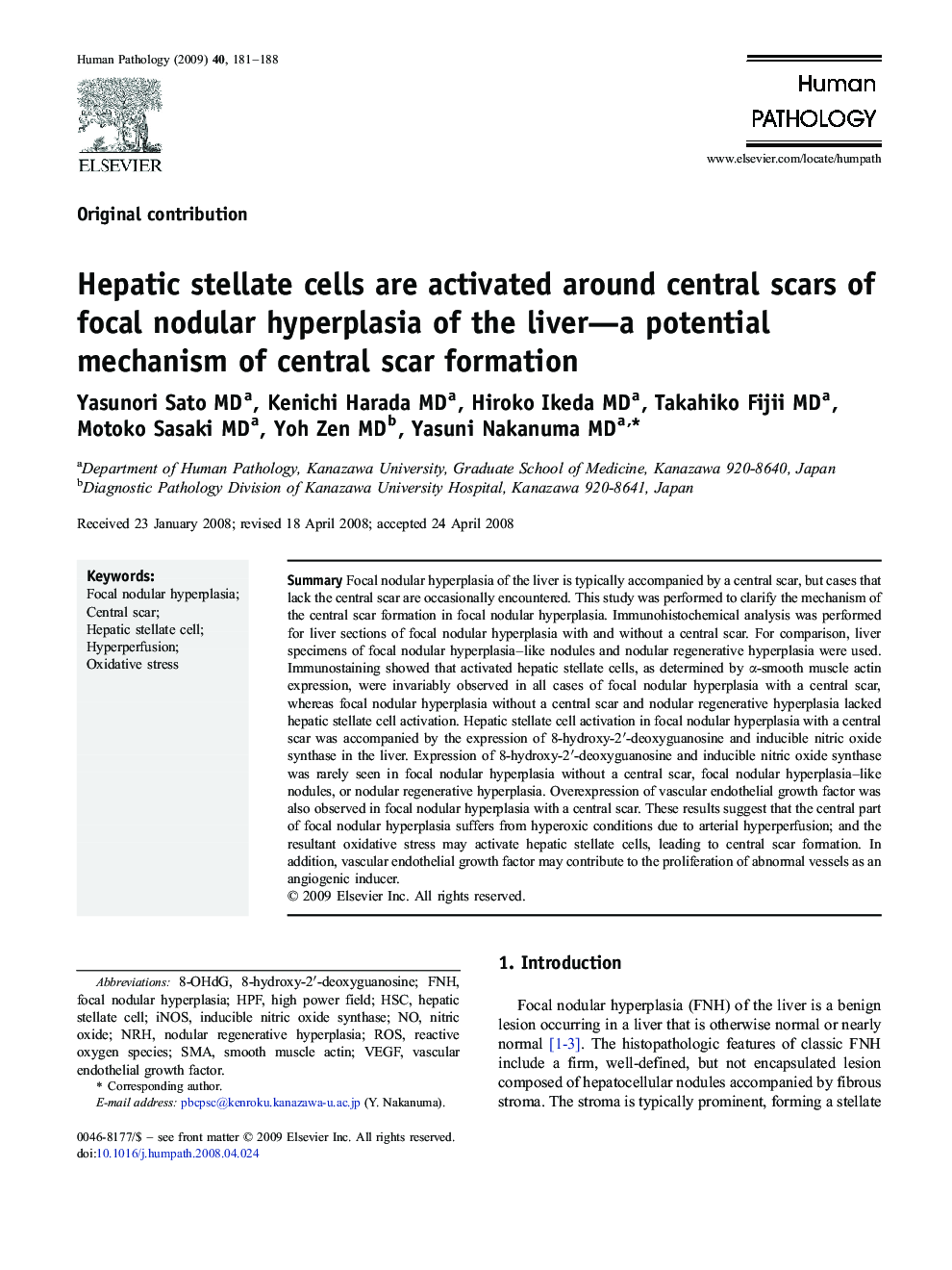| Article ID | Journal | Published Year | Pages | File Type |
|---|---|---|---|---|
| 4134879 | Human Pathology | 2009 | 8 Pages |
SummaryFocal nodular hyperplasia of the liver is typically accompanied by a central scar, but cases that lack the central scar are occasionally encountered. This study was performed to clarify the mechanism of the central scar formation in focal nodular hyperplasia. Immunohistochemical analysis was performed for liver sections of focal nodular hyperplasia with and without a central scar. For comparison, liver specimens of focal nodular hyperplasia–like nodules and nodular regenerative hyperplasia were used. Immunostaining showed that activated hepatic stellate cells, as determined by α-smooth muscle actin expression, were invariably observed in all cases of focal nodular hyperplasia with a central scar, whereas focal nodular hyperplasia without a central scar and nodular regenerative hyperplasia lacked hepatic stellate cell activation. Hepatic stellate cell activation in focal nodular hyperplasia with a central scar was accompanied by the expression of 8-hydroxy-2′-deoxyguanosine and inducible nitric oxide synthase in the liver. Expression of 8-hydroxy-2′-deoxyguanosine and inducible nitric oxide synthase was rarely seen in focal nodular hyperplasia without a central scar, focal nodular hyperplasia–like nodules, or nodular regenerative hyperplasia. Overexpression of vascular endothelial growth factor was also observed in focal nodular hyperplasia with a central scar. These results suggest that the central part of focal nodular hyperplasia suffers from hyperoxic conditions due to arterial hyperperfusion; and the resultant oxidative stress may activate hepatic stellate cells, leading to central scar formation. In addition, vascular endothelial growth factor may contribute to the proliferation of abnormal vessels as an angiogenic inducer.
